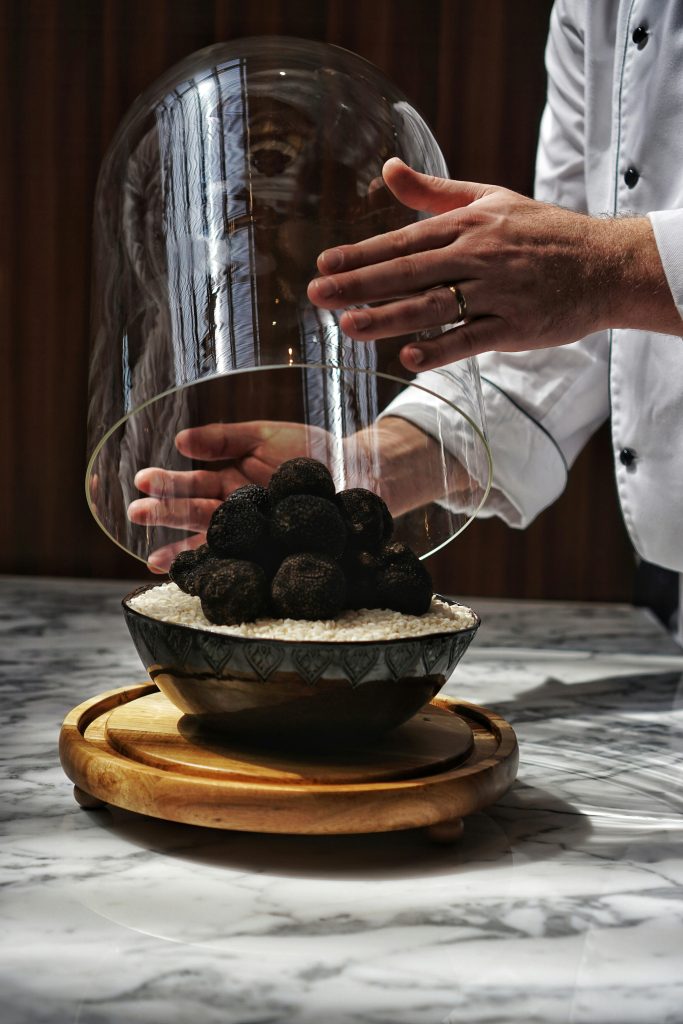
Truffles, known as “the diamonds of the kitchen,” brings an unparalleled aroma and flavour. Understanding truffles involves exploring their types, origins, characteristics, and culinary uses. Varieties like black and white truffles have unique attributes and seasonal availability. Found mainly in Italy and France, truffles thrive in specific soils and are often harvested using trained dogs or pigs. Their earthy aroma enhances pasta, risotto, sauces, and cheeses. Proper storage and handling are crucial to maintain their freshness and potency, making truffles a luxurious yet delicate ingredient.
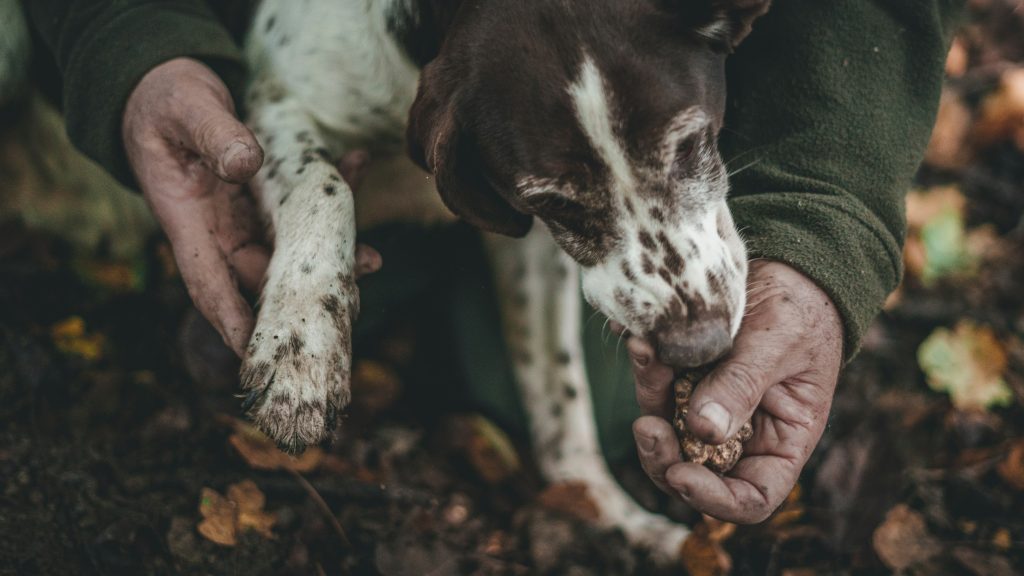
Truffles are a type of subterranean fungus highly prized for their distinctive aroma and flavour, often used in gourmet cuisine. Traditionally, truffle harvesting relied on the keen senses of pigs, particularly sows, which were attracted to the truffles’ scent. However, pigs often consumed the truffles before they could be collected. Today, trained dogs have largely replaced pigs in truffle hunting due to their better trainability and less destructive harvesting methods. Modern techniques also include controlled cultivation, though wild truffles remain highly valued. Harvesters, known as truffle hunters, typically search for these fungi in specific regions, with France and Italy being renowned for their high-quality truffles.
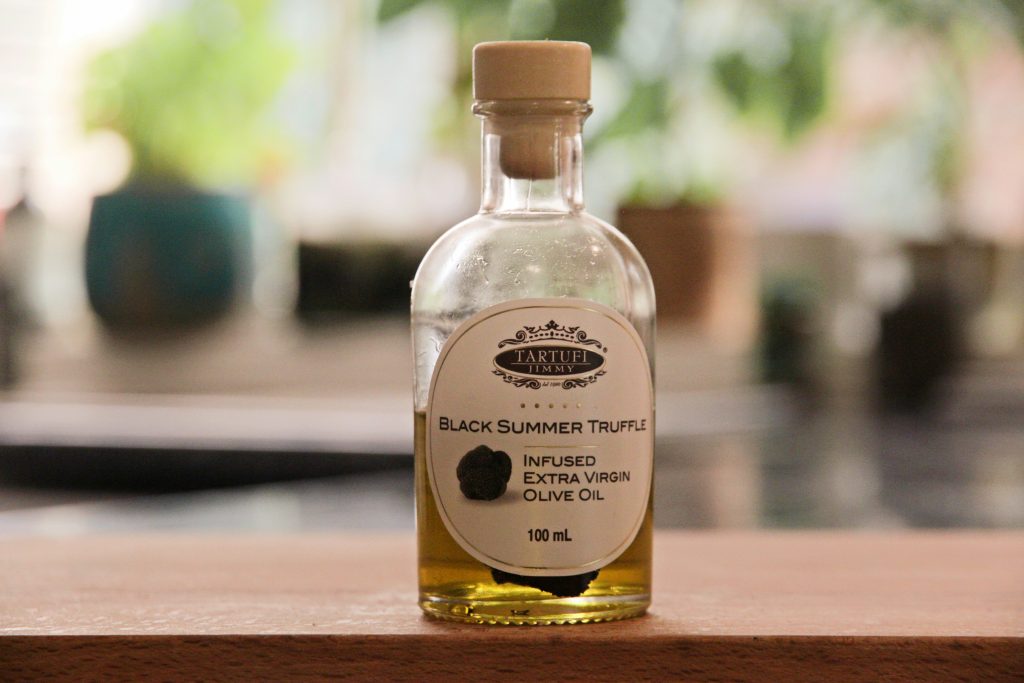
Truffles 101
- Definition: Edible subterranean fungus highly prized for their unique aroma and flavour.
- History: Truffles have been a delicacy since ancient times, enjoyed by the Greeks and Romans.
- Regions: Most famous are from Périgord, France and Alba, Italy.
- Traditional Harvesting: Historically, pigs were used due to their strong sense of smell.
- Modern Harvesting: Nowadays, dogs are preferred because they are less likely to eat the truffles.
- Cultivation: While truffles can be cultivated wild truffles are often considered superior.
- Seasonality: White truffles are harvested in autumn, black truffles from late autumn to winter.
- Culinary Use: Truffles are used sparingly in dishes to enhance flavour.
- Storage: Store truffles in the refrigerator, wrapped in paper towel, and in an airtight container.
- Value: Truffles prices vary significantly based on type, size, and quality.
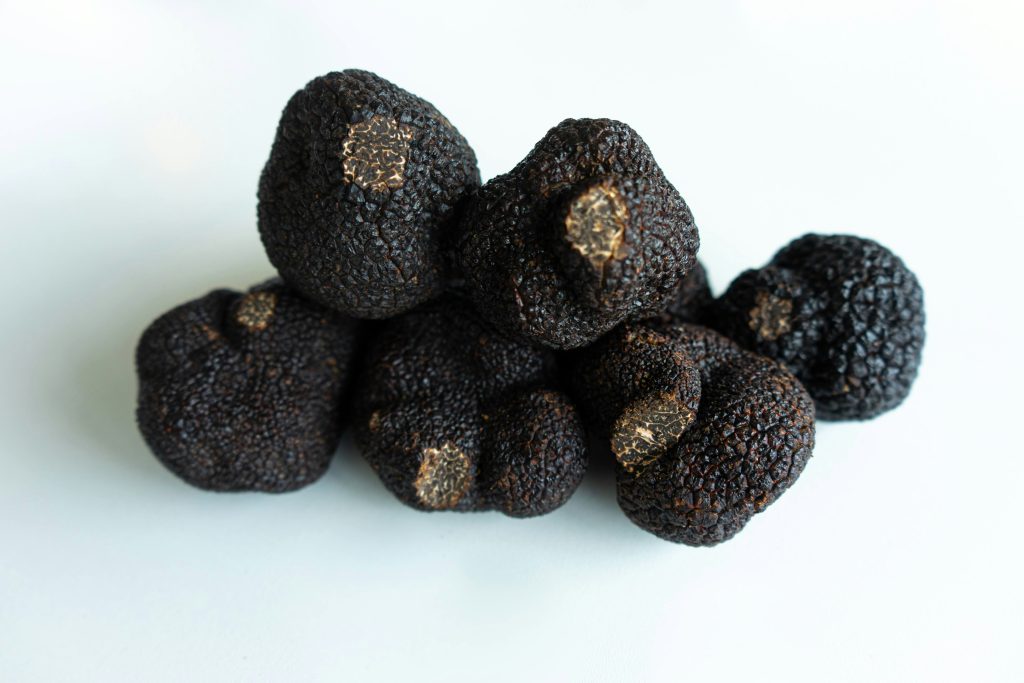
Black Winter Truffle
Tuber melanosporum
Black Winter Truffle, also known as the Périgord truffle, is found in the Périgord region of France, as well as parts of Italy and Spain. These truffles grow in calcareous soils near oak and hazelnut trees. Harvested between November and March, they are renowned for their deep, earthy aroma and robust, slightly sweet flavour with hints of chocolate and musk. Black winter truffles are typically 2 to 4 centimetres in diameter and are best enjoyed shaved over pasta, risotto, or scrambled eggs to elevate the dish with their intense fragrance.
Peak season: December to March.
Best food pairing: They pair excellently with risottos.
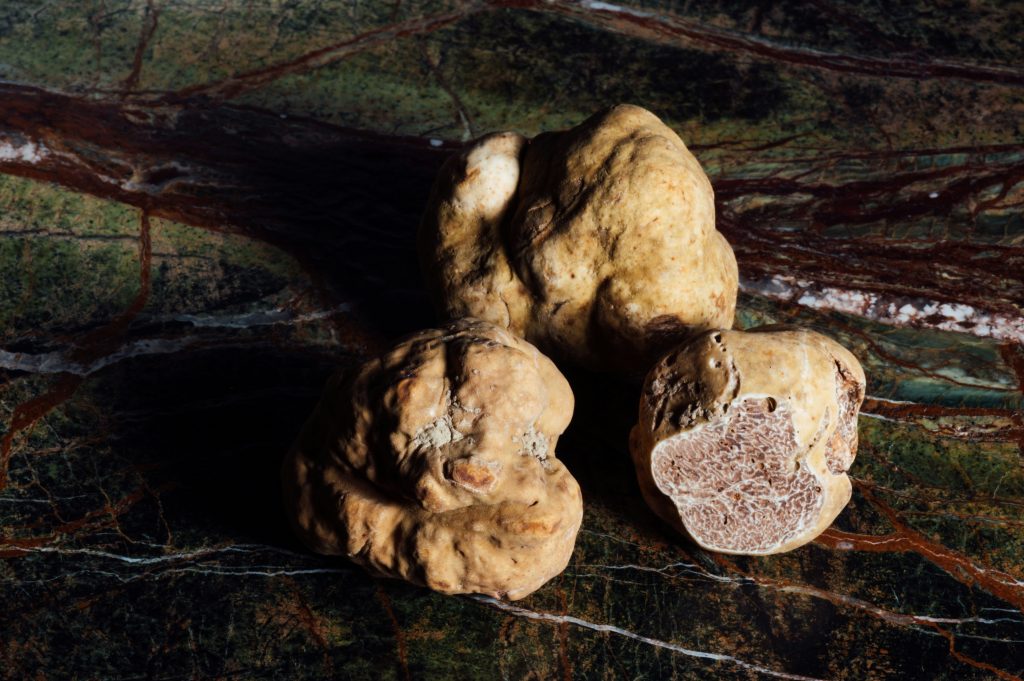
White Truffle
Tuber magnatum
White Truffle, also known as the Alba truffle, is native to the Piedmont region of Italy, particularly around the town of Alba. These truffles are found in limestone-rich soils near oak, hazelnut, and beech trees, usually harvested from September to December. White truffles are prized for their pungent, garlicky aroma with notes of cheese and their smooth, slightly spicy flavour. Typically 3 to 5 centimetres in diameter, they are best served raw, shaved thinly over simple dishes like fresh pasta, risotto, or scrambled eggs, allowing their powerful aroma to infuse the food.
Peak season: October to December.
Best food pairing: Shines when shaved over pasta.
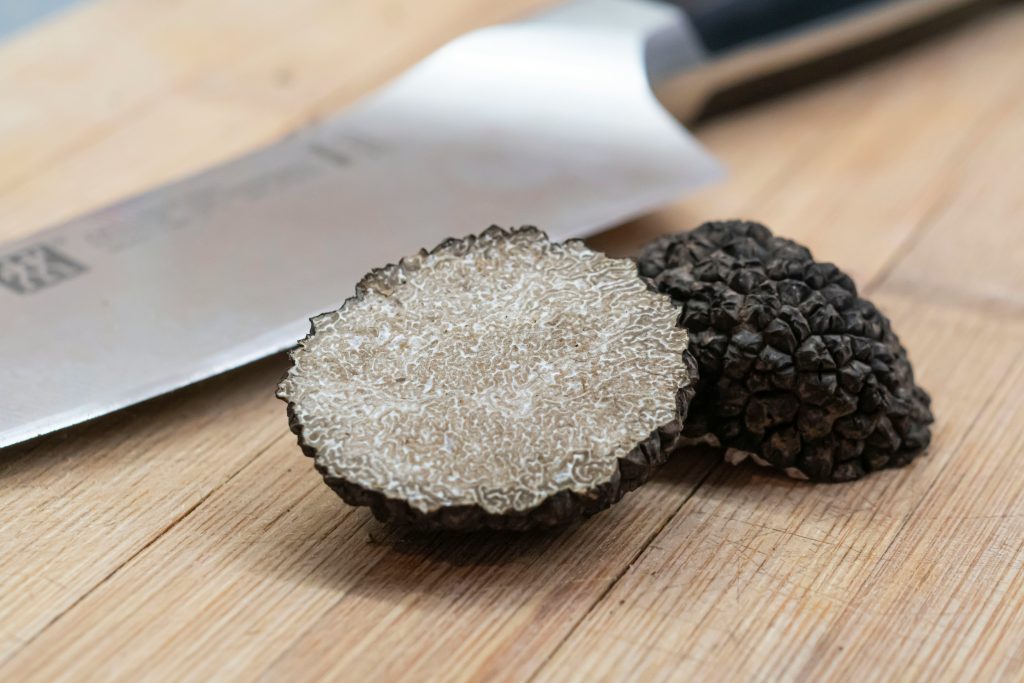
Summer Truffle
Tuber aestivum
Summer Truffle, also known as the Burgundy truffle, grows across Europe, including France, Italy, and Spain, in symbiosis with oak, hazelnut, and beech trees. Harvested from May to September, these truffles have a milder aroma compared to their winter counterparts, with notes of hazelnut and earth. Their flavour is delicate, with a nutty and slightly sweet profile. Summer truffles are smaller, typically 2 to 5 centimetres in diameter, and are best used to enhance dishes like salads, light pasta, or poultry, where their subtlety can shine.
Peak season: May to August.
Best food pairing: Complementing fresh salads perfectly.
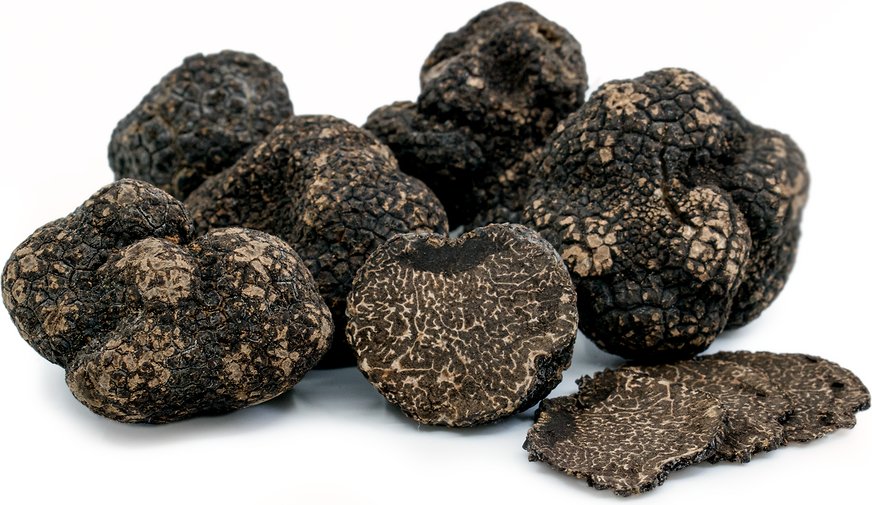
Black Summer Truffle
Tuber aestivum var. uncinatum
Black Summer Truffle, found in similar regions as the summer truffle, is harvested from September to December. These truffles have a more intense aroma and flavour than the summer truffle, with a nutty and earthy profile. They are about the same size, 2 to 5 centimetres in diameter. Black summer truffles are versatile and can be used in a variety of dishes, from pasta to roasted meats, adding a layer of richness without overpowering other flavours.
Peak season: June to September.
Best food pairing: Lightly flavoured pasta dishes.

Chinese Black Truffle
Tuber indicum
Chinese Black Truffle, native to China, is often found in regions like Yunnan and Sichuan. These truffles grow in symbiosis with various trees, including oak and pine. Harvested between November and March, they have a more subdued aroma and flavour compared to European black truffles, with earthy and woody notes. They are usually 2 to 6 centimetres in diameter. While not as aromatic, they are often used as a more affordable alternative in truffle oils and dishes where a subtle truffle presence is desired.
Peak season: December to March.
Best food pairing: Enhancing the flavour of soups.
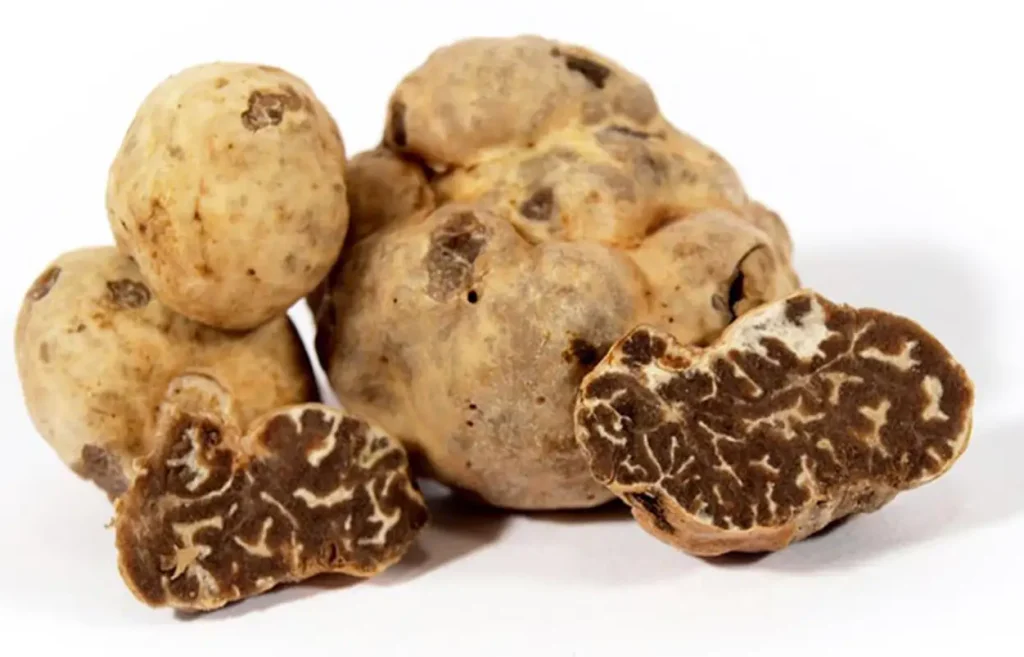
Bianchetto Truffle
Tuber borchii
Bianchetto Truffle, also known as the Whitish truffle, is found in Italy, particularly in Tuscany, as well as other parts of Europe. These truffles grow near coniferous and deciduous trees and are harvested from January to April. They are smaller, usually 2 to 4 centimetres in diameter, with a garlic-like aroma and a flavour profile that includes notes of garlic and mild spices. Bianchetto truffles are typically used in pasta dishes, risottos, and sauces, where their unique flavour can be appreciated.
Peak season: January to April.
Best food pairing: Delightful with scrambled eggs.

Oregon White Truffle
Tuber oregonense and Tuber gibbosum
Oregon White Truffle, native to the Pacific Northwest of the United States, grows in symbiosis with Douglas fir trees. These truffles are harvested from October to March. They have a pungent, fruity aroma with notes of pineapple and a slightly sweet, nutty flavour. Oregon white truffles are small, about 1 to 3 centimetres in diameter, and are best used in dishes where their distinctive aroma can stand out, such as in butter sauces or paired with poultry and seafood.
Peak season: October to January.
Best food pairing: Goes beautifully with seafood dishes.
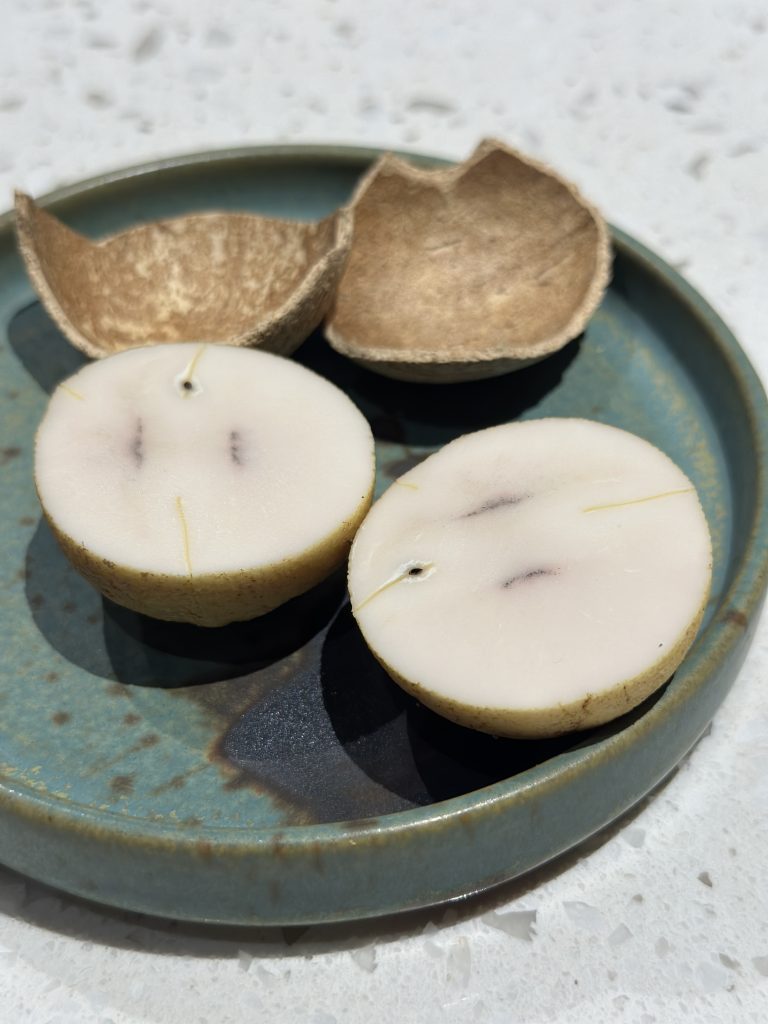
Kulim
Scorodocarpus borneensis
Although not a truffle (and more of an honorary mention), another unique culinary gem is the Kulim fruit, native to Malaysia. This fruit comes from the Kulim tree, which is found in the rainforests of Borneo and Peninsular Malaysia. The fruit has a distinctively strong, truffle-garlic-like aroma and flavour, which intensifies when dried. Used traditionally in Malaysian cuisine, Kulim fruit is often incorporated into curries, soups, and stews, imparting a deep, aromatic character similar to that of garlic but with a more complex, truffle-like earthy note. Its unique flavour profile makes it a valuable addition to gourmet dishes, offering an exotic twist to traditional recipes.
Peak season: Available year-round.
Best food pairing: Pairs well with strong flavoured dishes.
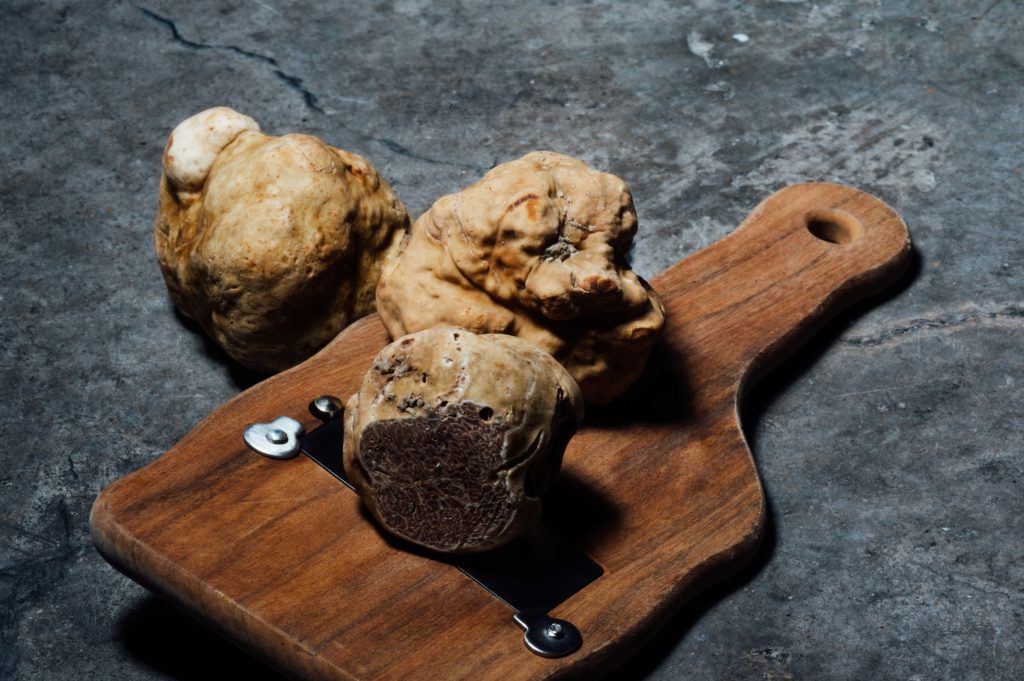
Each type of truffle and the Kulim fruit offer unique blends of aroma and flavour, making them prized additions to gourmet cuisine. Whether shaved over simple dishes or infused into oils and sauces, these delicacies add a touch of luxury and complexity that transforms any meal.
Did you enjoy reading this? For more, see our Food Guides.